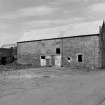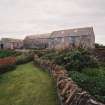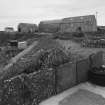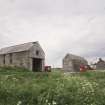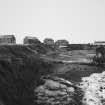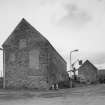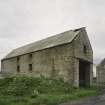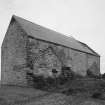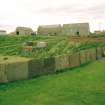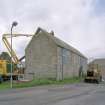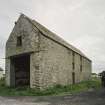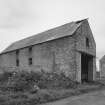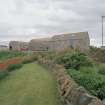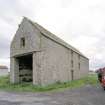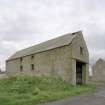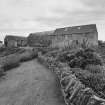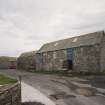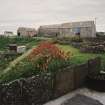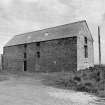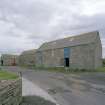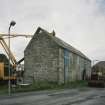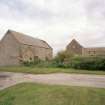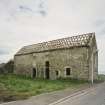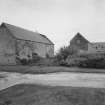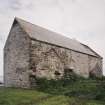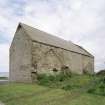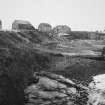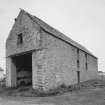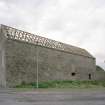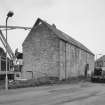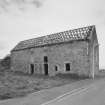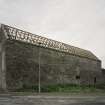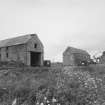Staxigoe, Granaries
Barn (Period Unassigned), Granary (18th Century)
Site Name Staxigoe, Granaries
Classification Barn (Period Unassigned), Granary (18th Century)
Alternative Name(s) Granary; Grain Store; Grain Store
Canmore ID 90933
Site Number ND35SE 39.01
NGR ND 38466 52431
NGR Description Centred ND 38466 52431
Datum OSGB36 - NGR
Permalink http://canmore.org.uk/site/90933
- Council Highland
- Parish Wick
- Former Region Highland
- Former District Caithness
- Former County Caithness
ND35SE 39.01 centred 38466 52431
Centred on Granary 1 (ND 38466 52431): formerly entered as ND35SE 74 at cited location ND 3846 5244.
This building has been photographed and recorded as a granary by John Hume.
Information from RCAHMS (SAH), 23 January 1996.
Large, simple, 2-storey and attic, 2-bay rectangular-plan grain store. Coursed Caithness stone. Modern corrugated asbestos roof.
The grain store was formerly part of a group of 3 grain stores situated directly above Staxigoe harbour. The other 2 grain stores (one of which was built as 2 houses in the late 19th century and converted to a grain store in the 20th century) were situated nearby to the NW, they were demolished in 2003.Although predominantly gutted and re-roofed in asbestos it is a large, impressive building with important historical and cultural associations to Staxigoe and the local area.
The 1865 New Statistical Account dates the 2 earlier grain stores buildings as early 17th century, however as J Hume points out it is more likely that they are 18th century. Staxigoe during the 18th and 19th century was a busy small port with the grain stores playing a fundamental role in the life of the village. The grain stores in the later 18th and early 19th century were owned by Alexander "Miller of the Field" a local entrepreneur and factor of the Hempriggs Estate. The above cited article in the Northern Ensign, 1869, documents his life and the importance the grain mills played within the area. Farmers and crofters often paid part of their rents in kind with grain, it would be ground and bagged at nearby Papigoe and then transported and stored at Staxigoe awaiting shipment. In times of scarcity of grain, people would travel to Staxigoe from as far as Sutherland to purchase meal, indicating that the village was one of the primary grain repositories within Caithness. Alexander "Miller of the Field" can also be credited as one of the first to realise the potential of the herring market in the 1770s and 1780s, no doubt under his entrepreneurial guidance Staxigoe became a thriving fishing station in the 19th century. The natural harbour to the immediate NE of the grain store was improved in the early 19th century as a result of the boom in fishing with quay walls built to both sides of the haven.A photograph held by the Royal Commission for Ancient and Historical Monuments of Scotland (RCAHMS) shows the village in 1891, 2 grain stores are clearly decipherable with many other domestic buildings surrounding them. The photograph also shows many more openings to the SW elevation of the store. With the demise of the fishing industry and change in farming methods the village fell into decline in the early 20th century. There was a large programme of demolition in the inter-war period with people being re-housed in newly built council housing. The area above the harbour was flattened with only a few buildings and the grain stores left standing. With the demolition of 2 of the grain stores in 2003 the surviving grain store is a unique testimony to the history of the village and a reminder of past agricultural practises.
It should be noted that in 2003 RCAHMS surveyed all 3 grain stores and found carpentry marks (Roman Numerals) in the roof timbers of the older grain stores. (Historic Scotland)














































